- (592)226-0431

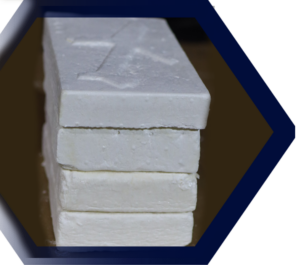
WHAT IS COCAINE?
Cocaine is a powerful stimulant drug made from the leaves of the coca plant native to South America. It is classified as a Schedule II drug, which means it has a high potential for abuse. Cocaine manufacturing process takes place in remote jungle labs where the raw product undergoes a series of chemical transformations. This drug can be administered by a doctor for legitimate medical uses, such as local anaesthesia for some surgeries.
WHAT ARE COMMON STREET NAMES?
Common street names include: Blow, Coca, Coke, Crack, Flake, Snow, and Soda Cot.
WHAT IS ITS EFFECT ON THE BODY?
Physiological effects of cocaine include increased blood pressure and heart rate, dilated pupils, insomnia, and loss of appetite. The widespread abuse of highly pure street cocaine has led to many severe adverse health consequences such as: Irregular heartbeat, ischemic heart conditions, sudden cardiac arrest, convulsions, strokes, and death in some users, the long-term use of inhaled cocaine has led to a unique respiratory syndrome, and chronic snorting of cocaine has led to the erosion of the upper nasal cavity.
WHAT IS THEIR LEGAL STATUS IN GUYANA?
Cocaine is classified as a Schedule I substance under the Narcotics and Psychotropic Substances (Control) Act Chapter 10:10. Schedule I includes any substance or substance-containing product listed in the First Schedule, as well as any psychotropic substance or substance-containing product listed in the Second Schedule.
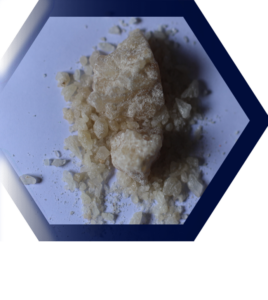
WHAT IS CRACK-COCAINE?
Crack cocaine, often simply referred to as crack, is a highly potent and addictive form of cocaine. It is derived from powdered cocaine hydrochloride through a chemical process that creates a crystal or rock-like substance.
WHAT IS ITS EFFECT ON THE BODY?
Crack is highly addictive, with rapid highs and quick comedowns leading to repeated use. It can cause cardiovascular issues like heart attacks, strokes, and respiratory damage. Smoking crack can cause chronic cough, respiratory distress, and lung trauma. It can also lead to neurological effects like paranoia and depression. Users may experience weight loss, malnutrition, and physical deterioration.
WHAT ARE THE SOCIAL AND LEGAL CONSEQUENCES?
Legal Penalties: Possession, distribution, and manufacture of crack cocaine are illegal and carry severe legal consequences.
Social Impact: Crack addiction often leads to significant social problems, including strained relationships, job loss, financial difficulties, and involvement in criminal activities.
WHAT IS THEIR LEGAL STATUS IN GUYANA?
In accordance with the Narcotics and Psychotropic Substances (Control) Act Chapter 10:10, Crack Cocaine is classified as a Schedule I substance. Schedule I includes any substance listed in the First Schedule or any substance-containing product listed in that Schedule. It also encompasses any psychotropic substance listed in the Second Schedule or any substance-containing product listed in that Schedule.
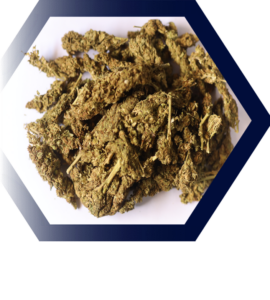
WHAT IS MARIJUANA?
Marijuana is a mind-altering (psychoactive) drug, produced by the Cannabis sativa plant. Marijuana has over 480 constituents. THC (delta 9-tetrahydrocannabinol) is believed to be the main ingredient that produces the psychoactive effect.
WHAT ARE COMMON STREET NAMES?
Common street names include: Sours, Cush, Sour Diesel, Creepy, Poppy, Aunt Mary, BC Bud, Blunts, Chronic, Dope, Gangster, Ganja, Grass, Hash, Herb, Hydro, Indo, Joint, Kif, Mary Jane, Mota, Pot, Reefer, Sinsemilla, Skunk, Smoke, Weed, and Yerba.
WHAT IS ITS EFFECT ON THE MIND?
Marijuana, a drug, contains THC, which enters the bloodstream and affects the brain through cannabinoid receptors. These receptors influence pleasure, memory, thought, concentration, sensory perception, and coordination.
SHORT-TERM effects include memory and learning problems, distorted perception, difficulty in thinking, and loss of coordination.
LONG-TERM use can lead to physical dependence and withdrawal, as well as psychological addiction.
Clinical studies show that the physiological, psychological, and behavioural effects of marijuana vary among individuals. Common responses include dizziness, nausea, tachycardia, facial flushing, dry mouth, and tremor, joy, happiness, and exhilaration at high doses. Common responses to cannabinoids include dizziness, nausea, tachycardia, facial flushing, dry mouth, and tremor, happiness, and exhilaration at high doses. Common responses to cannabinoids include disinhibition, relaxation, enhanced sensory perception, heightened imagination, time distortions, illusions, impaired judgment, reduced coordination, ataxia, emotional lability, and increased appetite.
WHAT IS THEIR LEGAL STATUS IN GUYANA?
Cannabis is classified as a Schedule I substance under the Narcotics and Psychotropic Substances (Control) Act Chapter 10:10. Schedule I includes any substance listed in the First Schedule or any substance-containing product listed in that Schedule. It also encompasses any psychotropic substance listed in the Second Schedule or any substance-containing product listed in that Schedule.
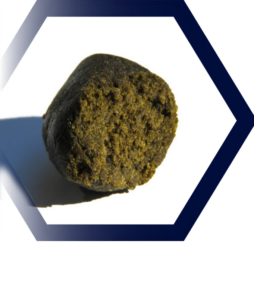
WHAT IS HASHISH?
Hashish, often called hash, is a concentrated form of cannabis made from the resin of the cannabis plant. It is one of the oldest forms of cannabis consumption, with historical use dating back thousands of years. Hashish can appear as a solid or paste-like substance. Its texture can vary from soft and pliable to hard and brittle.
WHAT IS ITS EFFECT ON THE BODY?
Hashish has stronger and more potent effects than regular cannabis because of its high THC concentration. Some of these effects include euphoria, relaxation, a distorted sense of time, and an intensified sensory experience. Hashish is also used for potential medical benefits, such as treating multiple sclerosis and chronic pain, as well as relieving nausea and discomfort.
Short-Term Effects: impaired judgment, coordination difficulties, and short-term memory impairment. Excessive doses may cause delusions, anxiety, and paranoia.
Long-Term Effects: Regular use may lead to dependence, cognitive decline, and respiratory problems (if smoked). There can also be negative impacts on mental health, such as an increased risk of developing anxiety or depression.
WHAT ARE THE LEGAL AND SOCIAL CONSEQUENCES?
Legal Penalties: In regions where hashish is illegal, possession, distribution, and production can result in severe legal consequences.
Social Impact: Use of hashish can affect relationships, employment, and other aspects of social life, especially if it leads to dependency or legal issues.
In accordance with Chapter 10:10, Narcotics and Psychotropic Substances (Control), Cannabis is classified under Schedule I. Schedule I typically includes any psychotropic substance listed in the Second Schedule, or any substance containing material specified in the First Schedule. It also encompasses any substance specifically listed there.
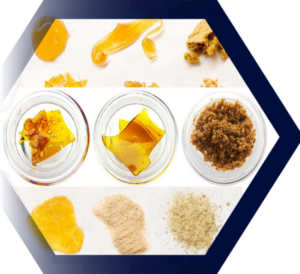
WHAT ARE MARIJUANA CONCENTRATES?
Marijuana concentrate is a highly potent form of THC (tetrahydrocannabinol) that has a thick consistency resembling honey or butter. Street names for marijuana concentrates include “honey oil” or “budder.” These concentrates have significantly higher THC levels, ranging from 40 to 80 percent, compared to high-grade marijuana which typically contains around 20 percent THC.
WHAT ARE COMMON STREET NAMES?
Common street names include: 710 (the word “OIL” flipped and spelled backwards), wax, ear wax, honey oil, budder, butane hash oil, butane honey oil (BHO), shatter, dabs (dabbing), black glass, and errl.
HOW IS IT USED?
The most common way to use marijuana concentrates is by smoking them, either through oil or water vaporizers. However, these concentrates can also be taken orally or mixed with various food and drink products. A concerning issue arising from this is the inhalation of concentrates using electronic cigarettes or vaporizers. Many users prefer these methods due to the lack of odor, smoke, and the ease of concealment. Inhaling marijuana concentrates using an e-cigarette or vaporizer is commonly known as “vaping” or “dabbing.”
WHAT ARE THE EFFECTS OF USING MARIJUANA CONCENTRATES?
The psychological and physical effects of this highly concentrated form of marijuana may be more intense than those of plant-based marijuana. The long-term consequences of marijuana concentrate use are not yet completely understood; however, the effects of marijuana use are well-documented. These effects include anxiety, hallucinations, panic attacks, and paranoia. Furthermore, the consumption of plant marijuana elevates one’s blood pressure and heart rate; however, prolonged use may result in hypotension. Addiction and withdrawal symptoms may also be experienced by plant marijuana consumers.
WHAT IS THEIR LEGAL STATUS IN GUYANA?
Cannabinoids are listed in Schedule I of the Narcotics and Psychotropic Substances (Control) chapter. Psychotropic substances (those on the Second Schedule) and substances containing psychotropic substances (those on the First Schedule) are typically categorized under Schedule I. The specific substance in question is also included in that category.
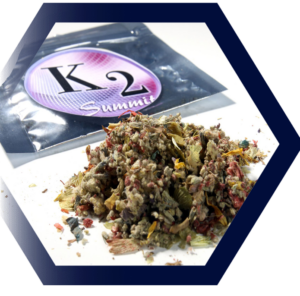
WHAT IS K2/SPICE (SYNTHETIC CANNABIS)?
Two popular brands of synthetic designer drugs designed to mimic THC, the main psychoactive component of marijuana, are K2 and Spice. These designer synthetic drugs, along with other synthetic cannabinoids, are often sold as “herbal incense” or “potpourri.” Synthetic cannabinoids are man-made chemical compounds produced in a laboratory, rather than occurring naturally. These drugs are marketed as substitutes for marijuana and are misused because of their psychoactive effects. They are distributed without any indication of their health and safety risks.
WHAT ARE COMMON STREET NAMES?
Synthetic cannabinoids have multiple street names because drug manufacturers aim to attract and entice young people and young adults by branding their products with exotic and flamboyant labels.
Some of the many street names of K2/Spice synthetic marijuana are Spice, K2, Blaze, RedX Dawn, Paradise, Demon, Black Magic, Spike, Mr. Nice Guy, Ninja, Zohai, Dream, Genie, Sence, Smoke, Skunk, Serenity, Yucatan, Fire, and Crazy Clown.
WHAT DOES IT LOOK LIKE?
The “herbal incense” products are typically made by dissolving chemical compounds in solvents such as acetone, and then applying them to dried plant material. These compounds usually come in bulk powder form.
Local distributors apply the drug to the dry plant material and then package it for retail distribution. Unfortunately, they often don’t follow any control mechanisms to prevent contamination or to ensure a consistent, uniform concentration of the powerful and dangerous drug in each package, as pharmaceutical-grade chemical purity standards are not adhered to. The bulk powder can also be dissolved in a solution intended for use in e-cigarettes or other vaping devices.
WHAT IS ITS EFFECT ON THE MIND?
Use of synthetic cannabinoids has been linked to acute psychotic episodes, dependency, and withdrawal. Others have experienced severe hallucinations, extreme agitation, disorganized ideas, paranoid delusions, and violence after smoking products contaminated with these drugs.
WHAT IS ITS EFFECT ON THE BODY?
Abuse of herbal incense products containing synthetic cannabinoids can lead to various negative health effects. These may include increased heart rate, high blood pressure, unconsciousness, tremors, convulsions, vomiting, hallucinations, agitation, anxiety, pallor, numbness, and tingling.
WHAT ARE ITS OVERDOSE EFFECTS?
The misuse of synthetic cannabinoids has been associated with severe side effects, such as agitation, anxiety, seizures, stroke, coma, and even death due to heart attack or organ failure. The Centres for Disease Control and Prevention have also reported instances of acute renal damage requiring hospitalization and dialysis in many patients who are believed to have used synthetic cannabis.
WHAT IS THEIR LEGAL STATUS IN GUYANA?
The amendment to the laws regarding narcotic drugs and psychotropic substances Bill has been approved. This means that individuals found in possession of synthetic drugs not previously covered by Guyana’s legislation will now be charged and brought before the courts. The National Assembly has approved the Narcotic Drugs and Psychotropic Substances (Control Amendment) Bill No.2.

WHAT IS VAPING?
Vaping is the act of inhaling and exhaling the aerosol or vapor created by heating a liquid or dry substance in an electronic device called an electronic cigarette or e-cigarette. The liquid may contain flavourings, nicotine, or concentrated marijuana extracts. Dry herb vaporizers are designed to heat dry marijuana without combustion and without the need for additional liquid. Generally, a vaping device consists of a battery, a cartridge for holding the e-liquid or dried marijuana, and a heating element. Vaping devices come in various forms and sizes, some of which look like USB flash drives, pens, or other common objects, posing challenges for parents and teachers to identify them.
WHAT ARE COMMON STREET NAMES?
Common street names include: E-cigs, e-hookahs, mods, vape pens, vapes, tank systems, and Juuls or Juuling (after the Juul brand of vaping devices).
WHAT IS ITS EFFECT ON THE BODY?
E-cigarettes contain nicotine, and in some instances THC, which can lead to addiction, respiratory issues, and long-term lung damage. Long-term effects include chronic bronchitis, heart disease, and brain development issues. Nicotine in e-cigarettes can also contain harmful chemicals and heavy metals, which can cause lung disease and lead to cancer. Long-term effects include EVALI, cardiovascular issues, and the development of harmful brain development during adolescence.
WHAT IS THEIR LEGAL STATUS IN GUYANA?
Tobacco Control laws-The law permits the sale of e-cigarettes. The use of e-cigarettes is prohibited where smoking is prohibited, which includes in all indoor public places, workplaces, and on public transport, as well as in specified outdoor places. All e-cigarette advertising, promotion and sponsorship is prohibited, as is product display at the point of sale. Health warnings are currently not required on product packaging. The sale of e-cigarettes is prohibited to persons under the age of 18.
If the liquid contains cannabinoids – Cannabinoids are listed in Schedule I of the Narcotics and Psychotropic Substances (Control) chapter. Psychotropic substances (those on the Second Schedule) and substances containing psychotropic substances (those on the First Schedule) are typically categorized under Schedule I. The specific substance in question is also included in that category.
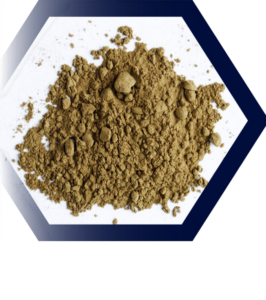
WHAT IS HEROIN?
Heroin is processed from morphine, a naturally occurring substance extracted from the seed pod of certain varieties of poppy plants. Heroin comes in several forms, primarily white powder, “black tar” and brown powder.
WHAT ARE COMMON STREET NAMES?
Common street names for heroin include: Big H, Black Tar, Chiva, Hell Dust, Horse, Negra, Smack, and Thunder
WHAT IS ITS EFFECT ON THE BODY?
Addiction is a significant outcome of opiate use. Tolerance to heroin develops with regular use, leading individuals to consume more heroin to achieve the same effect. As higher quantities of the drug are used over time, physical dependence and addiction develop.
Effects of heroin use include: Drowsiness, respiratory depression, constricted pupils, nausea, a warm flushing of the skin, dry mouth, and heavy extremities
WHAT ARE ITS OVERDOSE EFFECTS?
Because heroin users do not know the actual strength of the drug or its true contents, they are at a high risk of overdose or death.
The effects of a heroin overdose are: Slow and shallow breathing, blue lips and fingernails, clammy skin, convulsions, coma, and possible death.
WHAT IS ITS EFFECT ON THE MIND?
The rapidity at which heroin enters the brain makes it highly addictive, both psychologically and physically. Heroin users report feeling a short-lived sense of euphoria or “rush” followed by a state of semi-consciousness.
WHAT IS THEIR LEGAL STATUS IN GUYANA?
Heroin is classified as a Schedule I substance under Chapter 10:10 of the Narcotics and Psychotropic Substances (Control) Act. Schedule I typically includes any substance specified in the First Schedule or anything that contains any substance listed in that Schedule. Schedule II includes any psychotropic substance specified in the Second Schedule or anything that contains any substance defined in that Schedule.
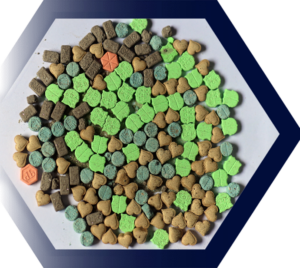
WHAT IS ECSTASY/MDMA?
MDMA, also known as ecstasy, is a stimulant and psychedelic used by adolescents and young adults to induce euphoria, intimacy, empathy, and sexuality. However, its use with other drugs can pose serious health risks, including overdose and death.
WHAT ARE COMMON STREET NAMES?
Common street names include: Molly, Adam, Beans, Clarity, Disco Biscuit, E, Ecstasy, Eve, Go, Hug Drug, Lover’s Speed, MDMA, Peace, STP, X, and XTC.
WHAT IS ITS EFFECT ON THE BODY?
MDMA, a substance used to enhance enjoyment, can cause symptoms such as increased motor activity, alertness, heart rate, and blood pressure, as well as physical effects like muscle tension, tremors, and impaired vision. Prolonged use can also harm the serotonin system.
WHAT ARE ITS OVERDOSE EFFECTS?
WHAT IS THEIR LEGAL STATUS IN GUYANA?
According to the Narcotics and Psychotropic Substances (Control) Act Chapter 10:10, “Ecstasy” or MDMA (3,4-methylenedioxymethamphetamine) is categorized as a Schedule I substance. Schedule I includes any substance listed in the First Schedule or any substance-containing product listed in that Schedule. It also includes any psychotropic substance listed in the Second Schedule or any substance-containing product listed in that Schedule.
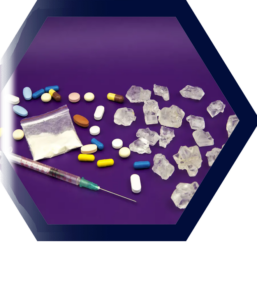
WHAT ARE AMPHETAMINES?
Amphetamines are stimulants that speed up the body’s processes. They are legally prescribed to treat attention-deficit hyperactivity disorder (ADHD). However, there has been a rise in the misuse of illicitly manufactured amphetamines over the years. This has led to an increase in amphetamine addiction and an expansion of clandestine laboratories producing the substance.
WHAT ARE COMMON STREET NAMES?
Common street names include: Bennies, Black Beauties, Crank, Ice, Speed, and Uppers
WHAT IS THEIR EFFECT ON THE BODY?
Physical effects of amphetamine use include: Increased blood pressure and pulse rates, insomnia, loss of appetite, and physical exhaustion
WHAT IS THEIR EFFECT ON THE MIND?
The effects of amphetamines are similar to those of cocaine, but they take longer to start and last longer. Unlike cocaine, which is quickly removed from the brain and mostly broken down by the body, methamphetamine stays in the central nervous system for a longer time, with a larger amount of the substance remaining unchanged in the body, leading to longer-lasting stimulant effects. Chronic abuse can lead to psychosis similar to schizophrenia, characterized by paranoia, obsessive thoughts, auditory and visual hallucinations, and skin picking. Chronic amphetamine users often show violent and unpredictable behaviour.
WHAT ARE THEIR OVERDOSE EFFECTS?
Overdose effects include Agitation, increased body temperature, hallucinations, convulsions, and possible death.
WHAT IS THEIR LEGAL STATUS IN GUYANA?
Chapter 10:10 of the Narcotics and Psychotropic Substances (Control) Act classifies amphetamine as a Schedule II drug. Psychotropic substances are typically listed in Schedule II. “Psychotropic substance” refers to any drug listed in the Second Schedule or any product containing a drug listed in that Schedule.
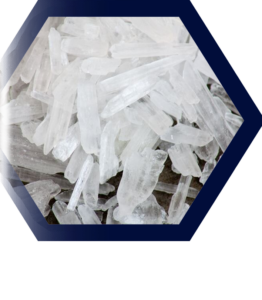
WHAT IS METHAMPHETAMINE?
Methamphetamine, which is more commonly referred to as “meth,” is a stimulant that is both potent and highly addictive, affecting the central nervous system. Methamphetamine is chemically similar to amphetamine, a substance that is used to treat narcolepsy and ADHD. However, methamphetamine has a significantly stronger influence on the brain and body.
WHAT ARE COMMON STREET NAMES?
Common street names include: Batu, Bikers Coffee, Black Beauties, Chalk, Chicken Feed, Crank, Crystal, Glass, Go-Fast, Hiropon, Ice, Meth, Methlies Quick, Poor Man’s Cocaine, Shabu, Shards, Speed, Stove Top, Tina, Trash, Tweak, Uppers, Ventana, Vidrio, Yaba, and Yellow Bam.
WHAT IS ITS EFFECT ON THE BODY?
Using meth, even in small amounts, can lead to a range of side effects. These can include overheating, rapid breathing and heartbeat, high blood pressure, reduced appetite, increased physical activity, and heightened alertness. Larger doses could result in seizures, heart failure, death, and dangerously high body temperatures, sometimes leading to fatalities. Additional side effects of meth use may include severe weight loss, memory problems, and serious dental issues.
WHAT ARE ITS OVERDOSE EFFECTS?
High doses may result in death from stroke, heart attack, or multiple organ problems caused by overheating.
WHAT IS THEIR LEGAL STATUS IN GUYANA?
Methamphetamine is classified as Schedule II under the Narcotics and Psychotropic Substances (Control) Act Chapter 10:10. Schedule II typically contains a list of Psychotropic Substances. The term “psychotropic substance” refers to any substance listed in the Second Schedule or any preparation containing a substance listed in that Schedule.
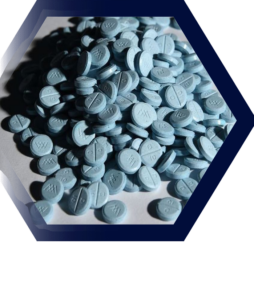
WHAT ARE BENZODIAZEPINES?
Benzodiazepines are a type of depressant that can induce sleepiness, reduce anxiety and muscle spasms, and lessen the frequency and severity of seizures. Currently, the only legal way to obtain benzodiazepines is with a prescription. Some people obtain benzodiazepines illegally by forging prescriptions or buying them through illegal means to maintain their supply.
WHAT ARE COMMON STREET NAMES?
Common street names include Benzos and Downers.
The most common benzodiazepines are the prescription drugs:
Valium®, Xanax®, Halcion® , Ativan®, Klonopin®
HOW ARE THEY ABUSED?
Many cases of substance abuse involve adolescents and young adults who either consume the substance orally or crush and inhale it to get high. This behaviour is especially common among users of heroin and cocaine. Additionally, opioid users often combine benzodiazepines with opioids to enhance their feelings of euphoria.
WHAT IS THEIR EFFECT ON THE MIND?
Benzodiazepines are associated with amnesia, hostility, irritability, and vivid or disturbing dreams.
WHAT IS THEIR EFFECT ON THE BODY?
Benzodiazepines slow down the central nervous system and may cause sleepiness and relaxed mood.
WHAT ARE THEIR OVERDOSE EFFECTS?
Be aware of the following effects of an overdose: extreme sleepiness, confusion, reduced coordination, diminished reflexes, respiratory depression, coma, and the possibility of death. When benzodiazepines and opioids are used together, some of the overdose symptoms that can occur include profound drowsiness, respiratory depression, coma, and even death.
WHAT IS THEIR LEGAL STATUS IN GUYANA?
Benzodiazepines are classified under Schedule 10 of the Narcotic and Psychotropic Substances (Control) Act Chapter 10:10. Narcotic substances are typically listed in Schedule I, which includes all drugs listed in the First Schedule or anything containing a drug listed in that Schedule. Schedule II includes all psychiatric drugs listed in that Schedule or anything containing a drug listed in that Schedule.